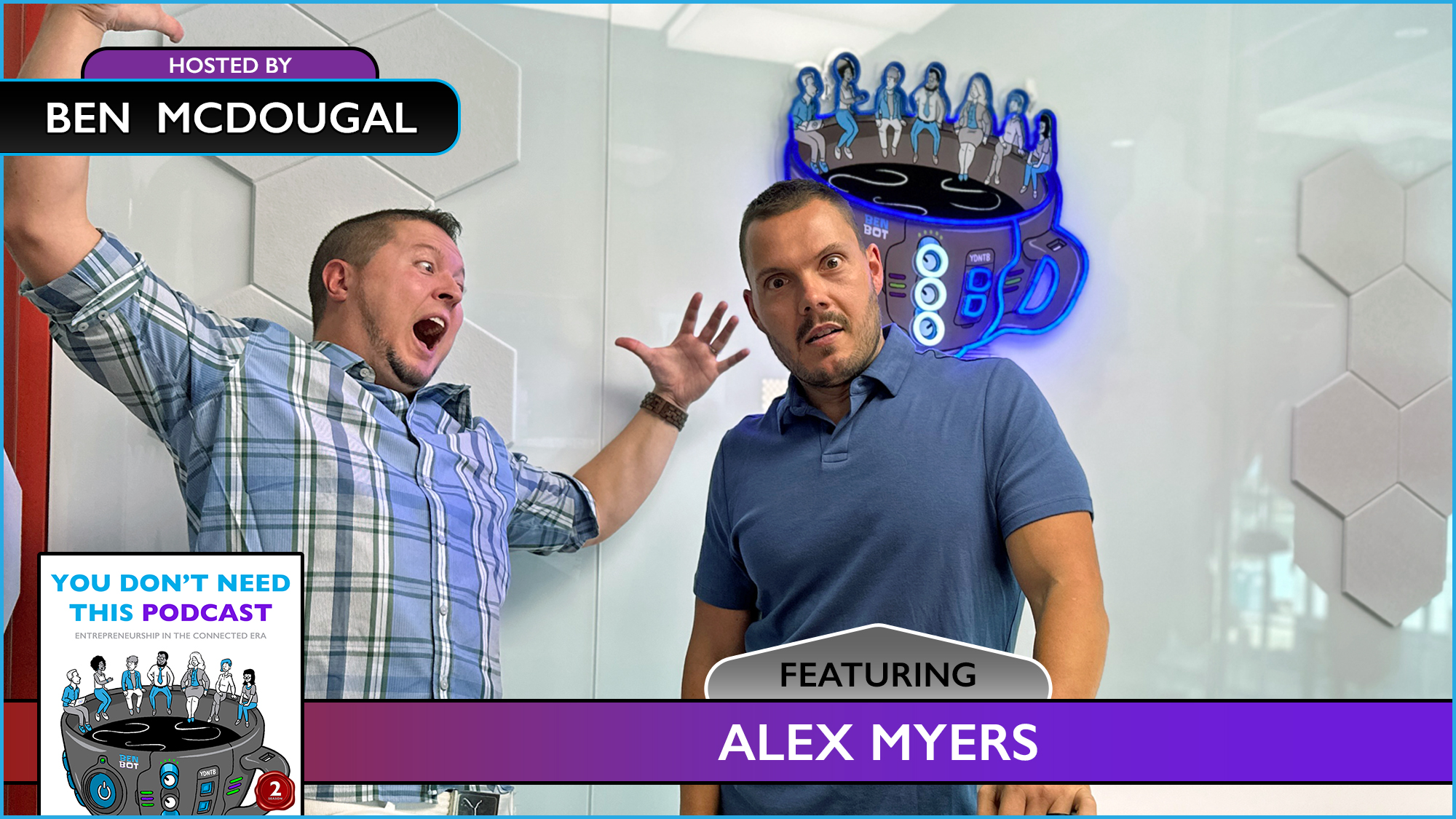“Where should I start?”
I hear this a lot when web3 terms like decentralization, blockchain, cryptocurrency, NFT, minting, gas fees, DAO, smart contracts, dapps, metaverse, tokenomics, and wallet addresses emerge in conversation. This month we’ll explore this futuristic frontier together!
Extra Shot
Before we drip in, it’s good to recognize that there is already a ton of research, content, and resources around web3 online. I share this disclaimer to add an approachable sense of lightness here. My goal is to share some early observations while teaming up with a few web3 crusaders to help translate a few compelling concepts. Whether this voyage is the first time you’ve heard of web3 or this is just another island in your ongoing exploration, pour another cup of curiosity and let’s drip in.
Back in the 1990s, we dialed up and waited for CDs in the mail to avoid paying for every minute of access to the world wide web. This early version of the Internet was built by developers and primarily delivered content in one direction. Websites were static and really only available for people to read. This read-only experience is referred to as web1.
With the rise of personal computers and online connectivity growing fast, around 20 years ago, the Internet started paving a two-way street. Remember endless chats on AIM? How about the sense of belonging on bulletin boards, the first time you managed your own content on a website, or the time spent designing your MySpace page? The ability for everyone to read AND write into the Internet is our current state and can be considered web2.
As supercomputers landed in the palm of our hand, the bionic connection to machines accelerated the connectivity worldwide and ushered in our connected era. While such affinity allows us all to do more with less, the platforms that support this connectedness have become centralized. This gives immense power (and liability) to organizations that control ownership, data security, privacy, and scalability. As our shared dependency on technology fed web2 archetypes, humanity became numb to the endless exchange of our personal data for convenience. This convenience has activated absolute accessibility, but how can we now use the connected era to power what’s next?
web3 is a concept that describes the future of how we will connect, communicate, and collaborate online. Web3 technologies strive to optimize opportunity with distributed, permissionless, transparent, proportionate, and verifiable decentralization. If web1 was read-only and web2 is read+write, web3 is read+write+own.
If your jargon alarm just exploded, it’s because this space is still undefined. There are few industry standards, as we’re in the midst of labeling a wide variety of efflorescent activity. One interesting thing about web3 jargon, is that it often describes things we already know. Advancing technology supports key attributes that make web3 concepts different, but here’s what I mean. Currency for instance, is the oldest story humans have used to exchange value. Access to a securely shared database is old hat for web2 wizards. We’ve lived in Sim City long before the metaverse, everyone already has flight tickets landing in digital wallets, and communities always thrive when they are brewed from within. That warm take is not to discount the magic that may be web3, but instead, to make it feel less distant. As web3 concepts move through the technology adoption life cycle, innovators and early adopters will continue to agree on terms that help translate the way different technologies work together. Tomorrow is today and as innovative ideology is normalized by mainstream adoption, it will be fascinating to see what concepts prevail.
Extra Shot
No AI support was used in this writing.
Let’s temporarily terminate this approachable welcome to web3 by chewing on key terms. With this being a working draft (current version below) supported by linked resources, take one more minute to give yourself a serious boost of confidence as we continue to explore web3 together.
Decentralization – Sufficiently transitioning from single authorities to proportionately deliver verifiable ownership, access, control, transparency, communication, and governance to many stakeholders.
Dapp – A decentralized application built on a decentralized network that combines a smart contract and a frontend user interface. <more on dapps>
Wallet – This is your tool to access the world of web3. A wallet is used to interact with dapps, store public/private keys, and connect digital assets to a specific network location. Each wallet has a unique wallet address that can be used for cryptocurrency transactions and digital signatures. <more on wallets>
Wallet Address – Wallet addresses refer to a specific location on a network and look like this: 0xb794f5ea0ba39494ce839613fffba74279579268. These hexadecimal strings are generated from the wallet’s private key, which is required to securely send or receive data from one address to another. Like URLs for a website, ENS masks long wallet addresses with more approachable names like yourname.ETH. A wallet address can be treated similar to an email address and shared with care, while seed phrases and private keys should never be shared.
Blockchains – A decentralized immutable system that records every transaction with transparent logs on a dynamic ledger. There are private/permissioned and public/permissionless blockchains, with different levels to build on. <more on blockchains>
Smart Contract – Code-based agreement that establishes terms for how a transaction is executed for stakeholders involved, automated governance, arbitration procedures, and more. <more on smart contracts>
Cryptocurrency – Fungible assets used to support immutable financial transactions between stakeholders. There are four categories (payment cryptocurrencies, tokens, stablecoins, and central bank digital currencies) and over 20K+ different cryptocurrencies that total a market capitalization of $850B+, with Bitcoin (BTC) and Ethereum (ETH) maintaining the largest market caps. <bitcoin white paper>
DeFi – Acronym for decentralized finance, which helps to weave cryptocurrency into the existing financial industry. <more on DeFi>
NFT – Short for “non-fungible token”, these are unique digital assets that use smart contracts to connect to blockchains, which autonomously applies, tracks, and transfers digital signatures and verifiable ownership. Non-fungible means that something is unique and can not be replaced. In contrast, physical money and cryptocurrencies are fungible, as they can be traded or exchanged for one another. <more on NFTs>
POAP – A proof of attendance protocol, which uses NFTs as tickets for an event or attendee confirmation at IRL (in real life) and online events. <more on POAPs>
Minting – The process of locking a cryptographic asset (such as an NFT) into a blockchain.
Airdrop – Giveaways sent to a digital wallet. They provide a creative way for people to share assets with each other, with senders usually paying any gas fee. Be skeptical of anything you receive that is airdropped from an unknown source. Like clicking links or opening attachments in emailed spam, there are poisonous airdrops that can force access into your digital wallet when a malicious item is transferred. To be safe, if an unrecognized airdrop lands in your digital wallet, leave it alone.
Gas Fee – One-time transaction fee to cover the dynamic costs of computing, electricity, and network verification required to interact with blockchains.
DAO – Acronym for “decentralized autonomous organization”, which can be compared to organizational structures like co-ops, LLCs, or venture capital firms. The specific structure, treasury, rules, and governance depend on the DAO and the group’s collective goals. <more on DAOs>
Metaverse – Interoperable virtual environments where users can interact with each other from anywhere. The rise of virtual and augmented reality has led to more immersive experiences.
Tokenomics – The abstract study of how digital assets work within social economic frameworks. Theories can range from how value is strategically perceived within a small DAO, all the way up to the global economy.
V1.1


